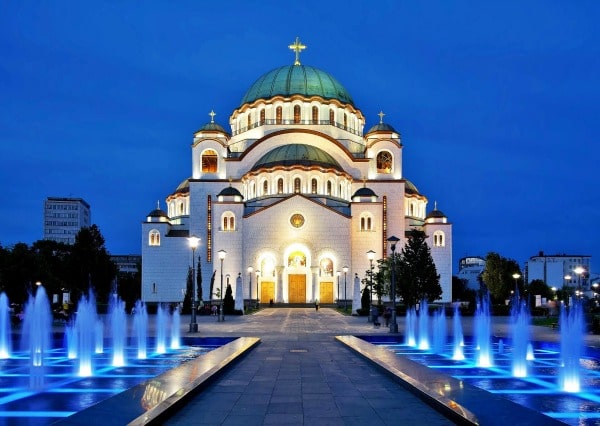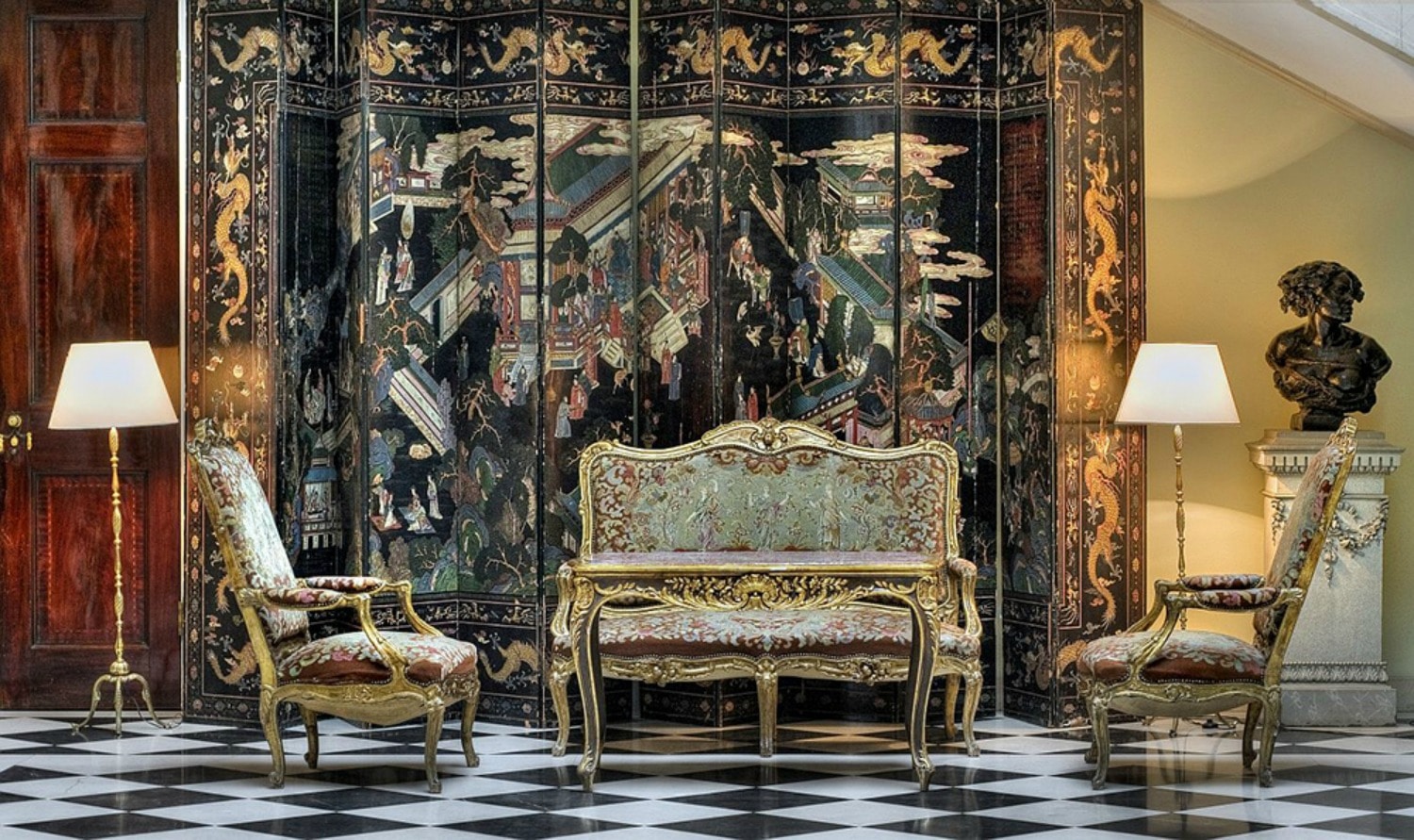Dusk to Dawn
There’s nothing like an invitation to a royal wedding to get you to Serbia – unless you just like to party; then, spending any weekend in Belgrade is worth the trip. From dusk to dawn the nightlife in the capital of Serbia sizzles, making it one of Europe’s premier see and be seen destinations. With dozens of edgy nightclubs on boats along the Danube in the Dorcol neighborhood, and on the Sava River in the Savamala district and the streets bursting with beautiful people and live music, the denizens of the night are flocking to this ancient city that has broken free from its past and is having a renaissance in music, art and design.
Add a plethora of historical sites and parks, as well as scenic views overlooking the rivers winding the town from the city’s walls, whose foundations date back to the 15th century, and you have something for everyone. You’ll relish exploring narrow cobblestone streets soaking up thousands of years of history (back to 6,200 BC), then sit and sip an exquisite coffee in one of the many quaint cafes. It’s a city you will love! And like Prague or Budapest you can do it in three days.
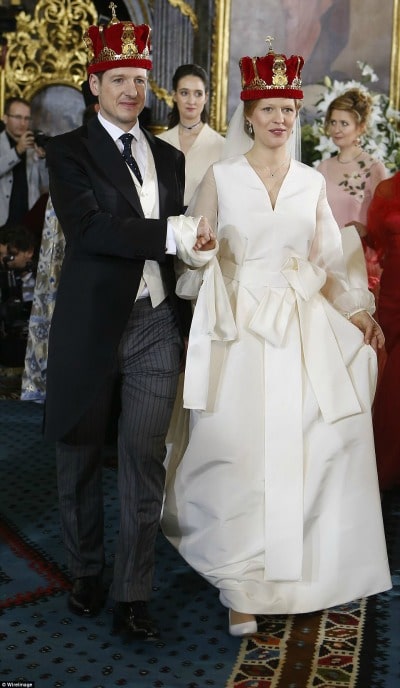
Royal Palace & White Palace
The royal wedding of Prince Philip, son of Serbia’s King Alexander, to Danica Marinković may be over, but happily, you can still visit Belgrade’s spectacular Royal Palace compound. There are guided tours every weekend from April through October. The two-hour tour includes the Royal and White Palaces, and professional guides talk about the history, art and culture of the region.
The Royal Palace was built between 1924 and 1929 with private funds from His Majesty King Alexander I. Designed by architects Zivojin Nikolic and Nikolay Krassnoff of the Royal Academy, the Palace is surrounded with pergolas, terraces, swimming pools and pavilions. The compound offers magnificent views of the ridge of Dedinje Hill, Koshutnjak Forest, Topchider and Avala Mountain.
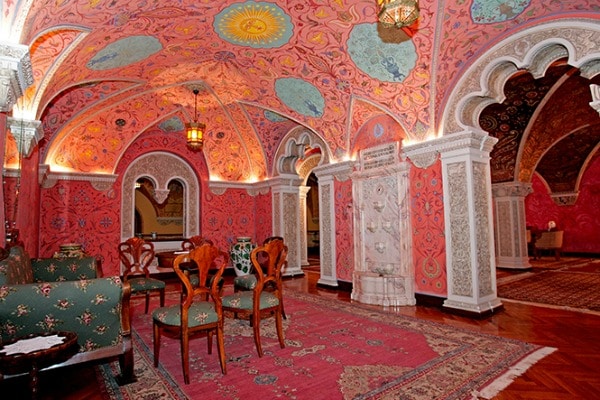
The White Palace, where the royal wedding party was held, is a separate building in the compound. It was built later, during the 1930s, because the king wanted his children to have their own home when they came of age. Dignitaries from Queen Elizabeth to Richard Nixon are among the folks who have stayed at the palaces which are filled with paintings, objects d’art, a series of luxuriously appointed underground rooms, and a grand cinema.
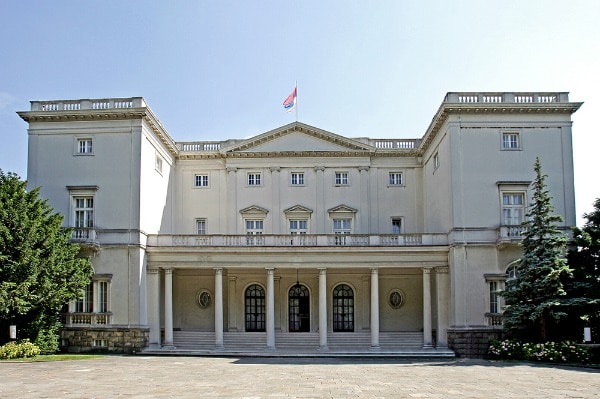
The Fountain That Cries
“The fountain that cries,” a colorful copy of Bakhysarai Fountain from the Khan’s Palace in Crimea is tucked away in the palace and has an interesting story of love and loss. Legend has it that when King Alexander was seen crying over the death of his beloved, the Grand Duchess Tatiana, Tsar Nicholas II’s daughter, he commissioned a fountain that would cry for him.
It also served a practical purpose, keeping conversations in this room private, since you couldn’t eavesdrop on the monarch. The cliché “if these walls could talk,” rings true as both Josip Broz Tito and Slobodan Milošević, the prosecuted war criminal who was Yugoslavia’s president from 1997 – 2000, used the Royal Palace.
In the ceiling you can see where Tito had all the symbols of the monarchy painted over, including the double-headed eagles, and replaced them with the red communist star. Crown Prince Alexander and his wife, Crown Princess Katherine, whom many in the country call King and Queen, live there today, although Serbia is not currently a constitutional monarchy.
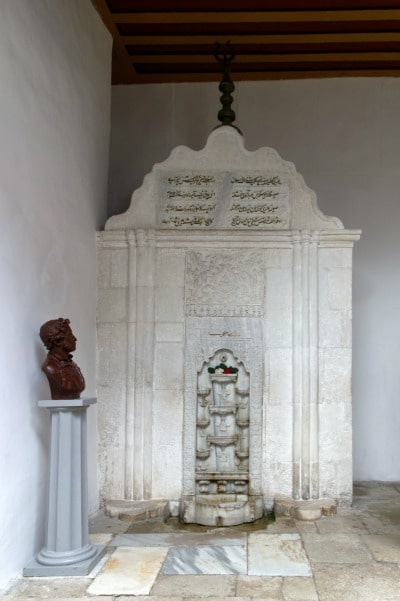
Where to Stay:
There are a lot of new hotels in Belgrade; among the best are Square Nine, the Metropol Palace, and the stylish Saint Ten, which has a chic lobby lounge.
Hotel Moskva
I opted to stay in the city’s iconic grand dame, the Hotel Moskva, which was built in 1906 and escaped being bombed by the Nazis because Hitler ordered it spared so he could use it to station his officers. The hotel reeks of history and old-world charm. Its roster of famous guests ranges from Albert Einstein, Luciano Pavarotti, Jack Nicholson, Kirk and Michael Douglas, Orson Welles, Brad Pitt and Robert De Niro to Alfred Hitchcock. Although it has been thoroughly updated with all the modern bells and whistles, its pastry shop is the best in town; try the macaroons and the “Moskva Snit” cake that’s truly heavenly.
Indira Gandhi & Maxim Gorky Slept Here
All hotel rooms are not created equally here, so be sure and book a duplex suite if you’re traveling with a friend or expecting guests. I choose the Maxim Gorky Suite, named after the Russian writer, who stayed at the hotel. The other premium suite is named for another famous guest, Indira Gandhi. Hotel Moskva is smack in the center of town, giving you easy access to Belgrade’s main sights, as well as picturesque pedestrian streets lined with flowering baskets and intriguing shops.
Cafe Moskva
Café Moskva is one of the city’s most popular meeting spots and has a grand red lounge with seating both outdoors and in, its interior spaces with enormous windows facing the action outside. There is live piano music at breakfast, tea, and cocktails adding to the charm of this bustling cafe. It’s also just a great spot to refuel any time of the day, with prime people watching. Exuding old-world charm and refinement, this place is popular with locals as well as tourists. hotelmoskva.rs
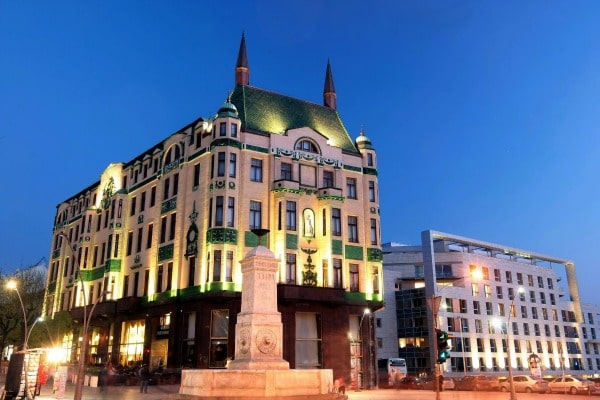
Where to Eat: Belgrade’s Best Restaurants
Madera
One of the city’s top restaurants is Madera, which features local fare. Try the steak or the perch, and definitely order a sampling of appetizers that includes their fabulous foie gras and a red pepper puree dish that you’ll rave about. maderarestoran.com
Homa
Homa is an haute cuisine temple with a contemporary and casual vibe. The food here is adventurous and almost everything is accompanied by a sorbet or ice cream. The truffle and cheese balls filled with goat cheese and the Bouillabaisse with Adriatic fish were both memorable, as was the three-layered chocolate dessert served in their signature clay pot. homa.rs
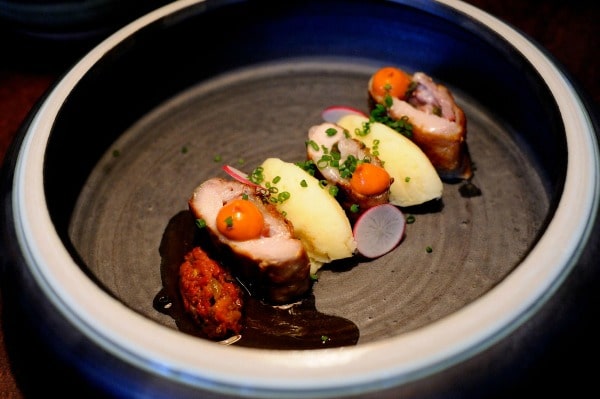
Ambar
Ambar is the place to sample Balkan cuisine. This chic spot presents traditional Balkan hospitality in a chic, sophisticated, minimalist setting. You can try different dishes from their sampling menu and sip traditional Serbian spirits called “rakias” on the terrace overlooking the Sava River. ambarrestaurant.com
What to Do in Belgrade:
Underground tunnels
Belgrade’s vast network of underground tunnels provides a fascinating look into the country’s past as a pawn of various empires, from the Romans to the Germans, who hid in the tunnels as WWII was coming to an end.
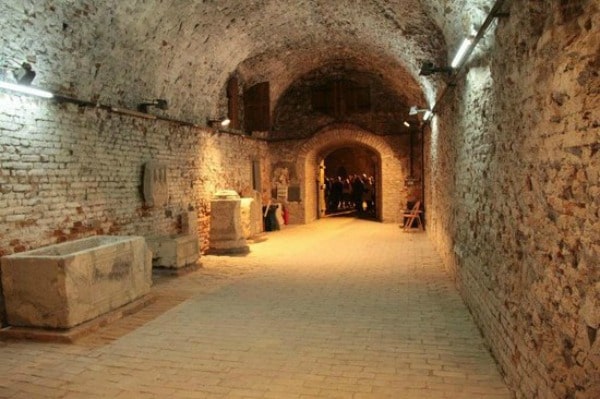
Kalemegdan Park
Kalemegdan Park is Belgrade’s most important place, a vast green space filled with monuments and a fort perched on a cliff overlooking the junction of the Sava and Danube rivers. First settled thousands of years ago, the park is home to remnants of Serbia’s past, from a Roman well to an Ottoman tomb to the Kalemegdan Citadel, which was the site of over 100 battles over the centuries.
Not only a historic site, the park also has a zoo and an amusement park with a historic Ferris Wheel, perfect for kids, and there are sporting activities, cultural events, performances, and cafes.
Belgrade Fortress
Belgrade Fortress was founded by Celtics in the 3rd Century B.C., and for centuries, the city’s population lived solely within its walls. The fortress is, literally, the core of Belgrade, and the city’s long history was concentrated there until modern times. The Byzantines rebuilt the fortress around 535 A.D., and it suffered continuous destruction over the centuries – including damage inflicted during the First and Second World Wars.
Nowadays, the fortress functions as a major cultural and historical center, home to multiple archeological digs, museums, monuments and galleries, plus restaurants and gathering spaces for sports and concerts by the likes of Amy Winehouse, Moby, Green Day, Whitesnake, Iron Maiden and Interpol. beogradskatvrdjava.co.rs
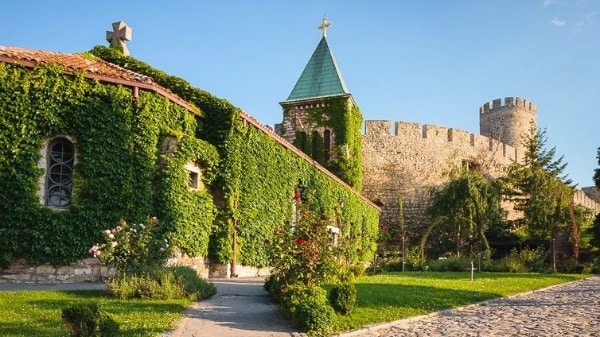
Skadarlija District
The Skadarlija district is Belgrade’s bohemian quarter, home to poets, artists, writers and musicians. In fact, Skadarlija and Paris’s artsy Montmartre officially became sisters in 1978, attested to by commemorative plaques in both communities.
The atmospheric area, in Stari Grad, the old town, was originally packed with dens of ill repute that were eventually replaced by more respectable establishments. Today, the happening neighborhood boasts some of the city’s best restaurants, cafes, art galleries, antique shops and nightlife. Republic Square, Belgrade’s central plaza, is one of the city’s most popular gathering places for locals.
Museum of Yugoslavia & The Tito Museum
Belgrade is not flush with museums as other European cities, like Paris, London, or Rome, but this quirky and slightly disturbing museum dedicated to Yugoslavia’s Socialist era mainly contains artifacts on the life of Josip Broz Tito, the communist dictator from 1944 to 1980. muzej-jugoslavije.org
Millennium Tower
This magnificent tower dating from 1896 was built as a memorial in celebration of 1,000 years of Hungarian settlement in the region. Built on the ruins of a medieval fortress, the tower is unofficially known as “Janos Hunyadi Tower” after a Hungarian military figure who died there in 1456, over 400 years before the tower was built. Today, the tower houses a gallery hosting regular exhibitions, and the views of the city from the top are spectacular, particularly at sunset.
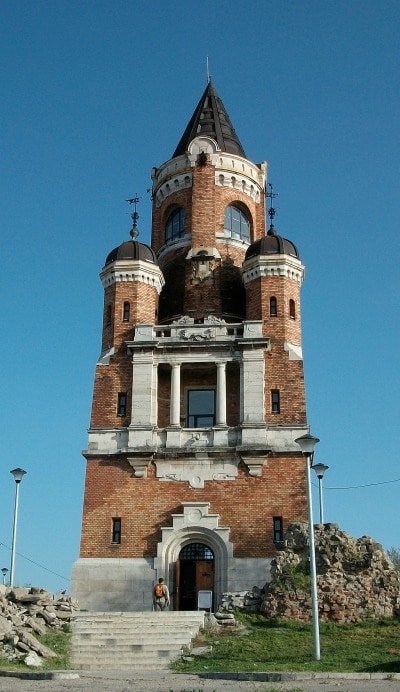
The Sava Temple
The Temple of Saint Sava is the world’s second largest Orthodox church, dominating Belgrade’s skyline. Built on the spot where St. Sava’s remains are believed to have been burned in 1595, the church’s history is unusual. Construction began in 1935 but Serbia’s tumultuous history got in the way of completion. Interruptions began during World War II, when Belgrade was bombed. The German army used the unfinished church for parking, and after the war, it was used as storage. Work on the temple finally resumed in 1985, and the main structure was mostly complete by 2004. Work on the interiors is still ongoing today. hramsvetogsave.rs
